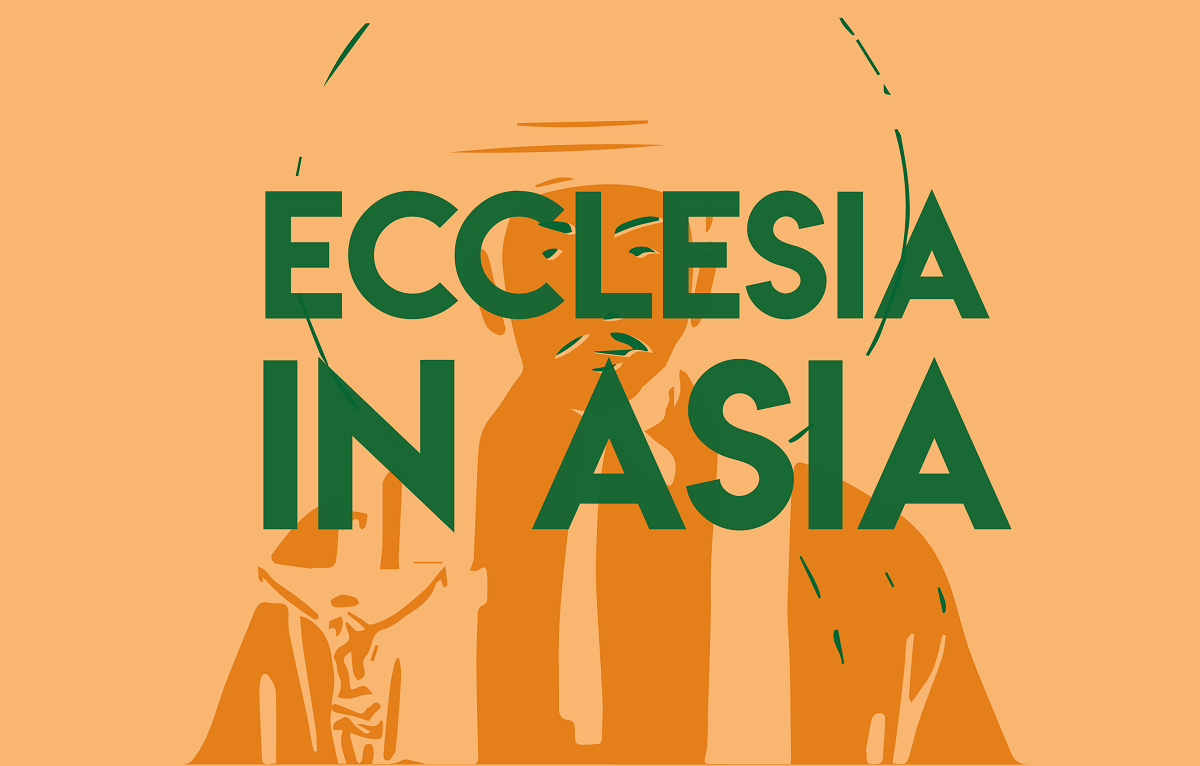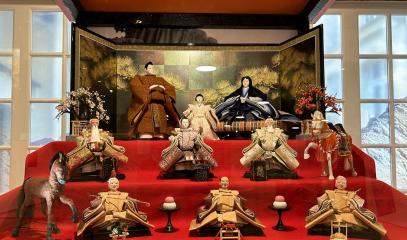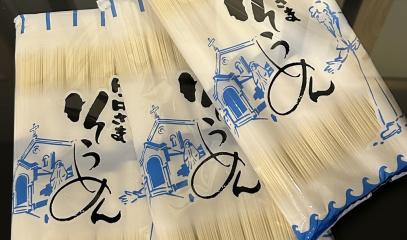Christianity in Japan: 475 years of faith on show in Paris
Entitled ‘From Samurai to Manga, the Christian epic in Japan’, an exhibition is on display until 13 July at the Mep premises. On display are objects from various collections that trace the history of persecutions and ‘hidden Christians’ but also the vitality of today's ‘little flock’.
Paris (AsiaNews) - Japan today has about 430,000 Catholics, just 0.34% of the country's population. The community is so small that it sometimes seems invisible, yet with a very rich history and still with a great liveliness of initiatives, from orphanages to the defence of the discriminated such as the Burakumin minority, from assistance to the homeless to that of drug addicts, alcoholics, the disabled, immigrants, prisoners, families and young people in difficulty to support for the victims of the numerous and serious natural phenomena such as earthquakes, tsunamis and floods that have often devastated the archipelago.
This is the picture that emerges when visiting the exhibition ‘From Samurai to Manga, the Christian epic in Japan’ - on show in Paris at the headquarters of the Mep, the Foreign Missions of Paris until 13 July 2024 - which recounts the Christian presence in the country, from the arrival of the first missionaries to the present day, through various works and artefacts from various collections around the world.
The first Westerners to set foot in Japanese territories were Portuguese traders who landed on the southern island of Tanegashima in 1543, but it was the arrival of St Francis Xavier in Kagoshima in 1549 that brought Christianity to the Japanese archipelago. Accompanied by two Jesuits, he began the conversion of the first men in Omura (Nagasaki) and Zusho, near Kyoto.
Japan was a state administered by the Shōgun, the strongest general appointed by the emperor, on whom the Daimyō, the governors of the provinces and feudal lords, depended. A civil war between the fiefdoms was in progress at the time and the Daimyō sought to expand and develop their domains by encouraging international trade and the construction of cities: it was this openness that enabled the missionaries' activities. To represent the interdependence of religion and trade, the exhibition offers a two-faced wooden statue that, like a two-faced Janus, depicts the face of a Jesuit and a European merchant.
However, in 1587, Shōgun Toyotomi Hideyoshi - in order to exert more control over the feudal governors converted by the Jesuits, the Kirishitan Daimyō - issued a first edict ordering the missionaries to leave Japan. Still in 1590, the Italian Jesuit, Giovanni Cola, was able to establish an art school in Nagasaki to produce works to decorate churches.
Individuals of the Christian faith in those years were still tolerated to protect the country's trade relations with the West. The ban on the practice of religion arrived in 1614 by decision of the Tokugawa Shōgun: starting from this date, the Shōgun promulgated a set of laws aimed at eliminating Catholicism and establishing strict control over the population.
Thus began the season of persecution: important martyrdoms took place in 1619 in Kyōto, in 1622 in Nagasaki and in 1623 in Edo (Tōkyō) although already in 1597, 26 Catholics including Jesuits and Franciscans were crucified in Nagasaki, later canonised by Pope Pius IX in 1862.
A practice imposed on people suspected of being close to Christianity to prove their estrangement was that of fumi-e, the trampling of crucifixes or images of the Virgin Mary. This practice was introduced following a major revolt by Catholics against the Tokugawa shogunate, the Shimabara revolt in 1637.
The shogunate suspected that Western Catholics had fostered the uprising and for this reason decided to also break off trade relations with the Portuguese, which after the expulsion of the missionaries and the Spanish, was the last relationship Japan had maintained with European Catholics.
The isolation ended in 1868 with the deposition of the Tokugawa family by the new emperor Mutsuhito, who gave power back to the imperial family in the so-called ‘Meiji Restoration’, an event regarded as the watershed between traditional and modern Japan.
It was in those same years that Fr Bernard Petitjean of the Mep was able to settle in Nagasaki where he had a church built and consecrated in February 1865. A few weeks later, a group of fishermen and artisans, intrigued by the new building, came to the missionary.
A woman approached him saying: ‘The heart of all of us who are here is like yours’ and with just three questions - ‘Do you know the Pope? Are you celibate? Do you pray to the Virgin Mary?’ - he discovered that they were the descendants of ancient Japanese Christians, the Kakure Kirishitan, who had guarded the Christian faith in secret for 250 years. One artefact in the exhibition that bears witness to this secrecy is a small statue of Mary and a crucifix hidden inside a Buddha.
However, the current exhibition at the Mep headquarters also tells the more recent history of the Japanese Catholic community. For example the dismay in the aftermath of the nuclear bombing that struck Nagasak, the centre of Christian faith in the country, in August 1945.
Hence the depiction of a woman above the atomic mushroom as a reminder of Mary's ascension into heaven; she is the wife of the Catholic doctor and writer, Paul Nagai Takashi. But also the special attention cultivated by the Japanese Church on the theme of peace: among the objects on display is a flag created ad hoc for the 2002 WYD in Toronto, which reinterprets the emblem of Japan with a dove rising from the red circle and with the coloured stripes typical of the flag of peace at the top of the circle.
Finally, recounting the history and more recent tradition of Christianity in Japan are Fr. Corvaisier's catechism booklets, hymn and prayer books, Bible translations, manga versions of the New Testament and the life of Jesus, noodles made by Fr. De Rotz in Shitsu to support the population economically, and the nativity scene made with dolls in the style of Hina Matsuri - the doll festival in honour of the female children celebrated on 3 March - in which Joseph, Mary and a grown-up, non-child Jesus are placed on the top level, the Magi on the middle level, and the rest of the people at the bottom.
Japan's is, therefore, a faith and a Church that over the centuries has been able to resist and develop despite the difficulties, accepted and shaped by the country's culture and that - still today - dedicates its energies to the least.
ECCLESIA IN ASIA IS THE ASIANEWS NEWSLETTER DEDICATED TO CHRISTIAN COMMUNITIES IN ASIA. TO RECEIVE A WEEKLY UPDATE EVERY SUNDAY, CLICK HERE.
02/11/2025 14:08
09/02/2025 12:51
17/11/2024 06:48










.png)











